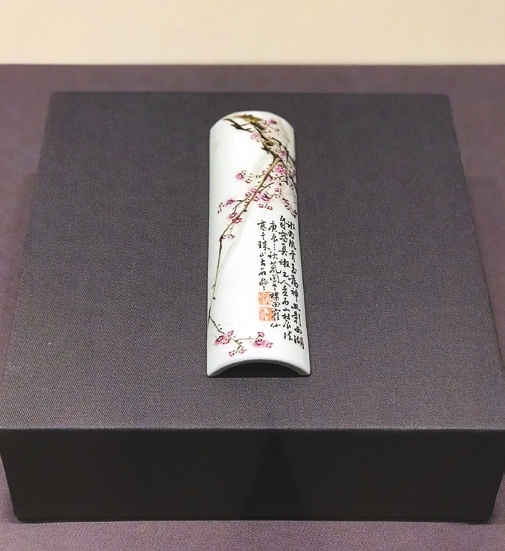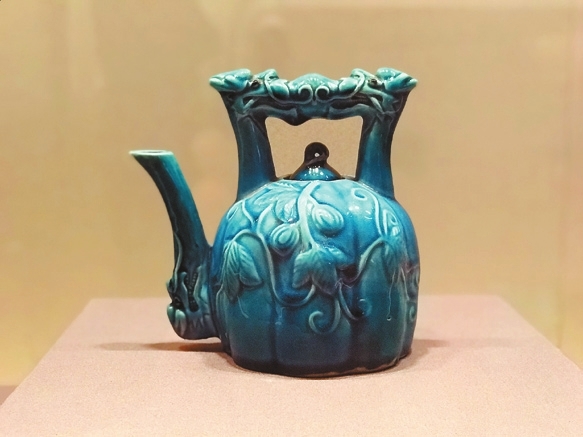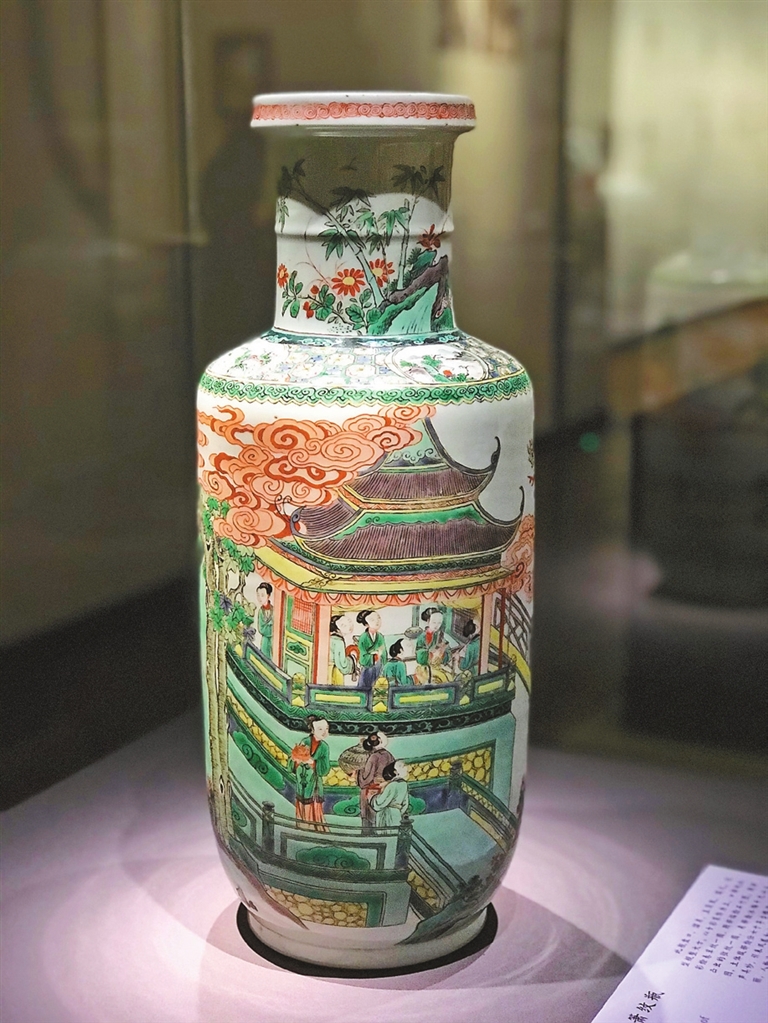


Cao Zhen caozhen0806@126.com About 70 pieces of Jingdezhen porcelain made in the late Qing Dynasty (1644-1911) together with some modern pieces are on display at the “Aesthetic Jingdezhen Ceramics: An Exhibition of the Masters of Modern Ceramics” at the Nanshan Museum. “Jingdezhen is known as the ‘Porcelain Capital’ of the world but it is also called the ‘Pearl Mountain’ because the city is surrounded by mountains, which looks like five dragons grabbing a pearl,” Qi Xin, director of the Nanshan Museum, said at the exhibition opening Wednesday. “At the Pearl Mountain, imperial kilns produced porcelain for the courts in the Ming (1368-1644) and Qing dynasties. In the late Qing Dynasty, as the imperial kilns shut down, a large number of craftsmen were forced to leave and work in private kilns, where there were no restrictions any more. So the techniques and styles were greatly improved, pushing Jingdezhen porcelain to a new height. They made remarkable achievements in facilitating the rise of porcelain with literati-painting patterns,” said Qi. On loan from the Jingdezhen China Ceramics Museum, the exhibited items include qianjiang porcelain and fencai (famille rose) porcelain, which are representative works of porcelain with literati-painting patterns. These porcelain patterns combine the Chinese ink painting with poems, calligraphy and seals. Qianjiang is a Yuan Dynasty (1271-1368) literati painting style where the landscapes are outlined with ink and complemented by strokes of pale umber to designate the lit areas of the landscape. Qianjiang enamels were applied directly on the white glazed porcelain surface, giving the decoration the appearance of watercolor painting. The decorations are pale in coloration and delicate in feeling, in sharp contrast to richly painted porcelain. During the 1930s, eight craftsmen in Jingdezhen met regularly to exchange porcelain techniques and ornamental skills. Called the “Eight Friends at Pearl Mountain,” these people all with excellent craftsmanship enjoyed high reputations for their famille rose porcelains which are characterized by decoration painted in opaque overglaze rose colors introduced from Europe. “The period from the late Qing Dynasty through the first half of the 20th century was a turning point for the development of Jingdezhen porcelain. The craftsmen survived through this difficult period and developed their skills through innovation. Their craftsmanship spirit is greatly valued today,” said Qi. Admission to the exhibition is free and visitors are required to book their visit on the WeChat account “nanshanmuseum” in advance. Dates: Until Nov. 22 Hours: 10 a.m.-5 p.m., closed Mondays (The museum also opens at 6-9 p.m. Saturdays.) Venue: Nanshan Museum, Nanshan District (南山区南山博物馆) Metro: Line 1 to Taoyuan Station (桃园站), Exit B | 
